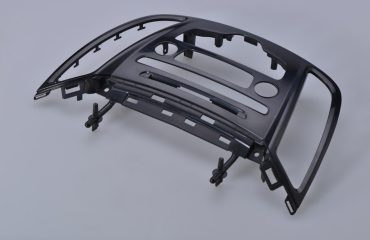body { font-family: sans-serif; line-height: 1.6; }
h1, h2, h3 { color: #333; }
code { background-color: #f0f0f0; padding: 2px 4px; border-radius: 4px; }
Steel, a ubiquitous material in modern construction, boasts exceptional strength and versatility. However, ensuring the safe and efficient use of steel in structures requires a thorough understanding of strength calculations. This blog post provides a comprehensive overview of the key principles and methods involved in determining the structural capacity of steel elements.
1. Understanding Load Combinations and Design Codes
Accurate strength calculations begin with a precise understanding of the loads acting on a steel structure. These loads can be broadly classified into dead loads (self-weight of the structure), live loads (occupancy loads, snow, wind), and environmental loads (earthquakes, temperature variations). Design codes, such as the American Institute of Steel Construction (AISC) Manual of Steel Construction or Eurocode 3, provide guidelines for determining appropriate load combinations and associated load factors that account for uncertainties and variations in load magnitudes. For example, AISC uses load factors to increase the magnitude of the loads to account for the uncertainties involved in predicting these loads. These load factors are applied to each load case and then various load combinations are considered to determine the most critical load scenario.
Understanding the specific design code applicable to your project is crucial. Each code specifies different load combinations, material properties, and allowable stresses, influencing the final strength calculations.
2. Material Properties and Allowable Stresses
The strength of a steel member is intrinsically linked to its material properties. Steel’s yield strength (fy) and ultimate tensile strength (fu) are key parameters in structural calculations. These values are determined through material testing and are specified by the steel manufacturer. Design codes prescribe allowable stresses (design strengths) that are fractions of the yield strength, incorporating factors of safety to account for uncertainties in material properties, workmanship, and load estimations. These allowable stresses dictate the maximum stress a steel member can experience under service loads without undergoing permanent deformation or failure. The selection of appropriate steel grade with its corresponding yield and ultimate strength values directly influences the structural design and member sizing.
3. Section Properties and Moment of Inertia
The geometric properties of a steel section significantly impact its strength. Key parameters include the cross-sectional area (A), moment of inertia (I), and section modulus (S). The moment of inertia (I) represents the resistance of a cross-section to bending, while the section modulus (S) relates the bending moment to the bending stress. Accurate calculation of these properties is essential for determining the bending capacity and shear capacity of steel members. For complex shapes, these properties are often obtained from steel section handbooks or using structural analysis software. Understanding these properties allows engineers to select the appropriate section size and shape to meet the design requirements.
4. Stress Analysis Techniques: Bending, Shear, and Axial Loads
Steel members can be subjected to various loading conditions, including bending, shear, axial tension, and axial compression. Analyzing these stresses requires different approaches. For bending, the bending stress (σ) is calculated using the formula σ = M/S, where M is the bending moment and S is the section modulus. Shear stress (τ) is calculated using the formula τ = V/A, where V is the shear force and A is the shear area. Axial stress (σ) is simply calculated as σ = P/A, where P is the axial load and A is the cross-sectional area. For combined loading conditions, interaction equations from design codes are used to ensure that the combined stresses remain within allowable limits. Advanced techniques like finite element analysis (FEA) can be employed for complex structural systems and loading conditions.
5. Stability Considerations: Buckling and Lateral-Torsional Buckling
Slender steel members are susceptible to buckling under compressive loads. Buckling is a sudden failure mode where the member loses its stability and collapses. Euler’s formula provides a theoretical basis for predicting the critical buckling load for slender columns. However, for more realistic scenarios, design codes incorporate factors to account for imperfections in the member geometry and material properties. Lateral-torsional buckling is another critical stability issue affecting beams under bending. This occurs when a beam bends and twists simultaneously, leading to premature failure. Design codes provide provisions for checking against lateral-torsional buckling using effective lengths and other parameters. Proper consideration of stability is crucial to ensure the safety of steel structures, particularly those with slender members.
Accurate strength calculations are paramount for the safety and efficiency of steel structures. By understanding load combinations, material properties, section properties, stress analysis techniques, and stability considerations, engineers can ensure the design meets the required performance criteria. Remember to always consult relevant design codes and standards for specific requirements and guidance.
SEO Tags:
- Steel structure calculations
- Steel design strength
- Structural steel analysis
- AISC steel design
- Eurocode 3 steel




